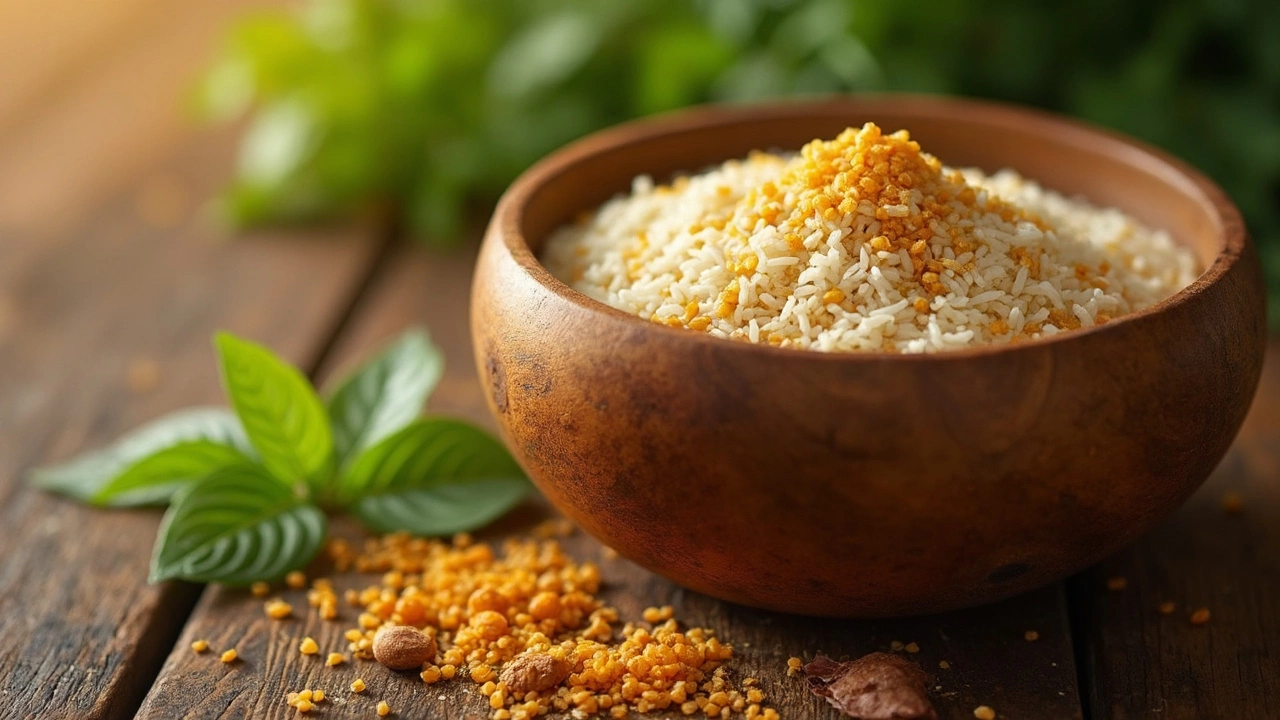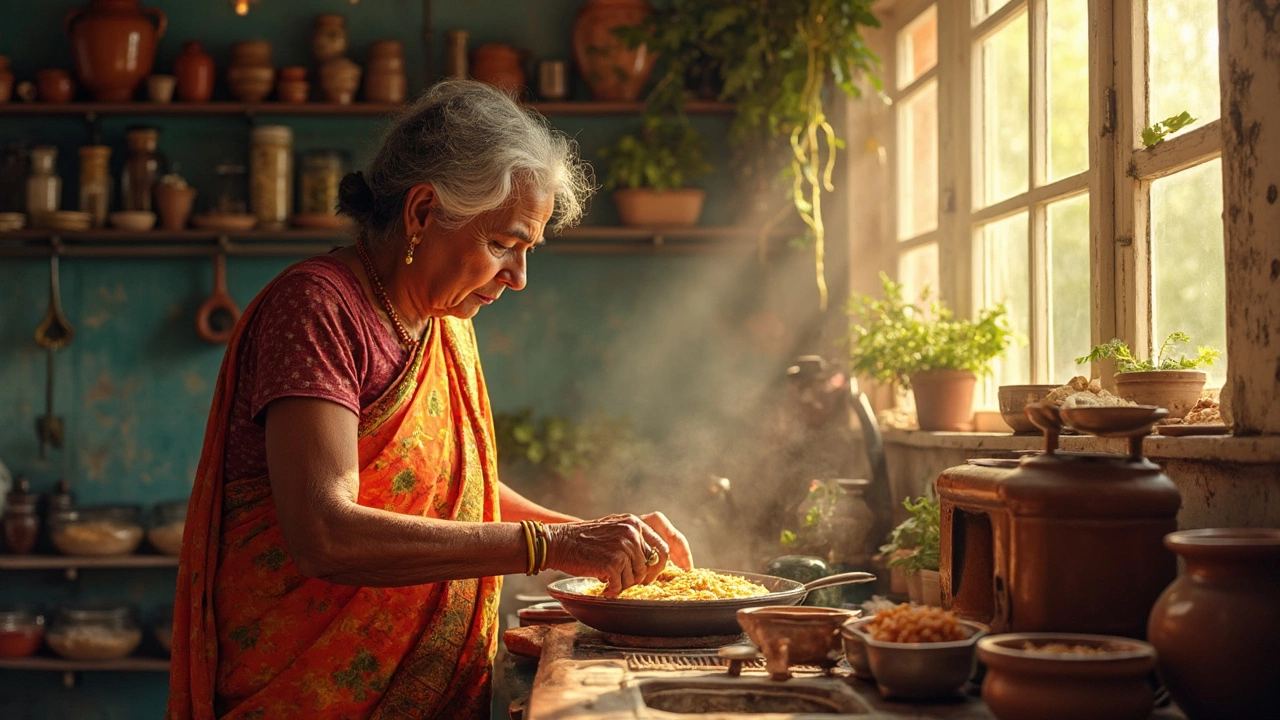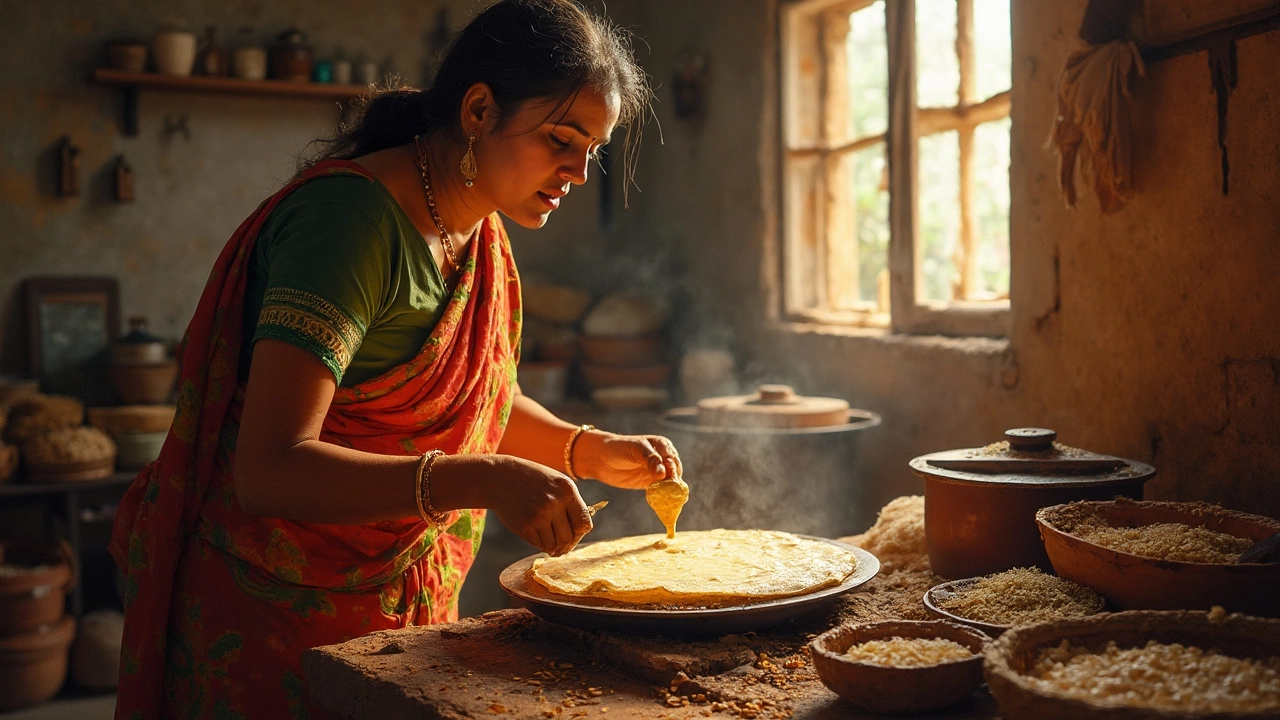Dosa Tips: Expert Tricks for Perfect Crispy & Fluffy Dosas
When working with Dosa a thin, fermented rice‑and‑lentil crepe from South India dosai, the goal is a golden‑crisp edge and a soft, airy interior. Achieving that balance hinges on three core ideas: the right acidity, the right leavening, and the right heat. dosa tips usually start with the batter itself, because everything else follows from how it behaves.
Key Ingredients & Techniques
The first game‑changer is curd live yogurt that adds natural acidity and probiotics. Adding curd to the rice‑lentil mix jump‑starts the fermentation, creating bubbles that lift the batter. Without that tang, the crepe stays dense and flat. Second, a pinch of baking soda an alkaline leavener that boosts puffiness when the batter hits a hot pan can turn a good dosa into a great one. Too much, and you get a metallic taste; too little, and the dosa stays soggy. Finally, fermentation the biological process that produces carbon dioxide and lactic acid is the engine behind flavor and texture. Proper fermentation gives the batter a sour note that balances the rice sweetness and makes the batter easy to spread.
When you combine these three, a simple semantic triple forms: Dosa batter requires fermentation; fermentation produces acidity; acidity enhances the effect of baking soda. In practice, that means you should let the batter sit at room temperature for 6‑12 hours, or use a quick‑ferment hack if you’re short on time. A warm spot (around 30 °C) speeds up the probiotic action, while a cooler spot preserves flavor without over‑souring.
Quick‑ferment tricks include adding a tablespoon of plain yogurt to the batter before it rests, or tossing in a pinch of ready‑made sour starter. Both supply the bacteria you’d otherwise wait for. The result is a batter that’s bubbly within an hour, ready for a pan‑sear. Remember, the batter should be thick enough to coat a spoon but fluid enough to spread without clumping.
Cooking technique matters just as much as the batter. Use a non‑stick or well‑seasoned cast‑iron skillet heated to medium‑high. When the surface sizzles, pour a ladle of batter and swirl it in a circular motion. A thin layer gives that signature crisp edge; a slightly thicker spot in the center keeps the middle fluffy. Add a drizzle of oil around the edges for extra crunch, but don’t drown the dosa – a few drops are enough.
If you’re chasing extra fluff, sprinkle the measured amount of baking soda (about ¼ tsp per cup of batter) just before you pour the batter. The soda reacts instantly with the acidity, creating a burst of bubbles that lift the crepe. This step is optional for traditionalists, but most home cooks swear by it for a light, airy bite.
Many newcomers wonder whether they can skip the soaking of rice and lentils. Soaking for 4‑6 hours softens the grains, reduces grinding time, and improves the final texture. Skipping it makes the batter gritty and prolongs fermentation. If you’re in a rush, a quick‑blend with hot water can mimic the softening effect, but the flavor depth may suffer.
Beyond the basics, you can experiment with flavor add‑ins: a handful of chopped cilantro, a pinch of cumin seeds, or even grated coconut. Each addition introduces a new semantic connection – for example, coconut contributes moisture and subtle sweetness, which balances the sourness from curd. Just keep the batter’s overall consistency in mind.
When the first dosa pops out perfectly, you’ll notice the tell‑tale signs: a golden rim, a soft middle, and a faint aroma of fermented grains. If the edges stay pale or the crepe sticks, check your pan temperature and batter thickness. Too cool, and the batter absorbs oil; too hot, and the outside burns before the inside lifts.
With these dosa tips you can move from a hesitant first try to a confident breakfast routine. Below you’ll find a curated list of articles that dive deeper into each component – from curd’s role in fermentation to the science behind baking soda’s leavening power, and even shortcuts for rapid batter preparation. Use them as a toolkit to fine‑tune your own dosa game and impress anyone at the table.

Ideal Urad Dal to Rice Ratio for Perfect Dosa Batter
Discover the perfect ratio of urad dal to rice for making dosa batter that yields crispy yet fluffy dosas. Learn tips for soaking, grinding, and fermenting to enhance the taste and texture. Perfect your dosa-making skills with these helpful insights!

Quickly Ferment Dosa Batter Without Yeast: Best Techniques
Discover the top methods to ferment dosa batter quickly without using yeast. Learn about temperature tricks, ingredient tips, and practical dos and don'ts for speedy fermentation. Enhance your dosa-making skills with reliable techniques for that perfect texture. Enjoy delicious homemade dosas without waiting forever. Save time and enjoy fresh dosas any day!

Quickly Ferment Dosa Batter Without Yeast
Mastering the art of dosa involves perfecting the batter, especially without using yeast. This article delves into practical tips for fermenting dosa batter in record time, embracing natural methods without compromising taste. Discover the importance of temperature, ingredient proportions, and useful hacks to achieve a well-fermented batter for those crispy, golden dosas. Explore how a warm environment can speed up fermentation, making it efficient even in colder climates.

Quickly Rise Dosa Batter Without Yeast: Simple Hacks
Dosa, a popular South Indian dish, often requires fermentation to achieve its perfect texture. However, waiting hours for batter to rise might not always be feasible. This guide reveals effective techniques to make dosa batter rise quickly without the use of yeast, ensuring you enjoy crispy dosas in less time. Learn practical tips and tricks that transform batter rising into a speedy and successful process.

Mastering Dosa Batter Without Yeast for Perfect Results
Making dosa batter without yeast can seem challenging, but it's completely achievable with a few simple ingredients and techniques. This article explores how to prepare dosa batter using traditional methods, ensuring crispy dosas without the need for yeast. Learn the science behind fermentation, the importance of ingredient ratios, and tips to achieve restaurant-quality dosas at home. Unlock the secrets to perfecting your dosa game with practical advice and fun facts.